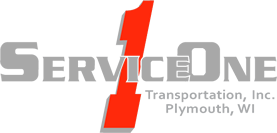The expansive network of trucking routes is the pulsing artery of the global economy, connecting cities and industries, moving goods from ports to warehouses, and stocking the shelves of your favorite stores. But not all routes are created equal. Some carry far greater weight than others in terms of demand, volume, and significance. In this in-depth analysis, we’ll explore the most crucial trucking routes and the economic and logistical reasons they are indispensable to the global supply chain.
Introduction
Millions of miles of highways crisscross the world, but only a select few rise to the top echelons of the trucking infrastructure. These major routes represent more than just a line on a map; they are the intersection of commerce and connect the central hubs of global trade.
Understanding which routes are the most crucial can provide valuable insights for truckers, logistics professionals, and all those involved in the intricate ballet of supply chain management. Knowing where the heavy traffic is can not only inform better logistical planning but also offer a picture of economic health and growth potential.
Most In-Demand Trucking Routes
Route 1: Description and Reasons for Demand
Route 1 connects two major economic centers and has become a vital link in regional and national trade. The demand for this route stems from the high volume of goods that are manufactured and distributed along its corridor. Additionally, it offers strategic advantages in terms of access to major seaports and ease of connectivity to other inland transportation modes.
This route is frequented by industries such as automotive, electronics, and consumer goods, which are among the largest sectors driving freight demand globally.
Route 2: Description and Reasons for Demand
Route 2 is a transcontinental behemoth, spanning thousands of miles and serving as the main artery for a diverse range of industries. Its demand is propelled not only by the volume of goods but by the nature of the cargo it carries, predominantly bulk and perishable items.
Industries such as agriculture, energy, and resource extraction rely heavily on this route for the efficient movement of goods. Seasonal factors and agricultural cycles can significantly impact the demand on this route, as can energy market fluctuations.
Route 3: Description and Reasons for Demand
Route 3 is unique for its role in international trade, connecting two countries and bridging the gap for cross-border commerce. It is a lifeline for the automotive industry, facilitating the movement of parts and finished vehicles. The route’s strategic location in the heart of a regional manufacturing powerhouse further accentuates its demand.
Global trade agreements, labor costs, and currency exchange rates all play parts in the demand on this route, and geopolitical shifts can influence the balance of trade flow between the countries it connects.
Factors Driving Demand
Economic Growth
Unsurprisingly, a booming economy translates into increased demand for trucking routes. Rising consumer spending, industrial expansion, and a healthy job market all contribute to a robust demand for transport services.
Economic growth is not uniform, however. Some regions may outpace others, creating imbalances in demand. Monitoring GDP growth, consumer confidence, and retail sales figures can offer a window into the economic forces shaping the demand for trucking routes.
Industry Trends
Certain industries have a more profound impact on the demand for trucking routes. For example, the e-commerce boom has led to a surge in the demand for last-mile delivery services. Likewise, the growth of just-in-time manufacturing methods has placed a premium on the efficiency and reliability of transportation networks.
By staying abreast of market trends and sector-specific demand drivers, logistics professionals can adapt to the shifting landscape and ensure their services remain in high demand.
Infrastructure Developments
The construction of new highways, bridges, and tunnels can open up previously unviable routes, creating new avenues for trade and demand. On the flip side, congestion, wear and tear, and safety concerns on existing routes can divert traffic and drive demand for alternative paths.
Government spending on infrastructure and public-private partnerships are critical factors that influence the development and efficiency of trucking routes. Upcoming projects and long-term infrastructure plans are essential to foreseeing future shifts in demand.
Benefits of Optimizing Trucking Routes
Cost Savings
By identifying the most efficient routes and eliminating unnecessary detours, trucking companies can save on fuel, maintenance, and labor costs. Optimizing routes can also reduce the time spent in transit, cutting down on expenses and improving asset utilization.
Advanced routing technologies and real-time traffic updates enable companies to make on-the-fly adjustments, ensuring their fleets take the most cost-efficient paths available.
Efficiency Improvements
An optimized trucking route is not only the shortest distance between two points; it minimizes the complexities of the operation, from loading to unloading. Streamlining the process leads to faster turnaround times, reduced idle time, and ultimately, more efficient service.
Collaborative planning with shippers and receivers can further enhance the efficiency of trucking operations, aligning pickup and delivery schedules with the most favorable route conditions.
Environmental Impact
Reducing the number of miles driven and idling time not only saves costs but also benefits the environment. By limiting unnecessary emissions, optimizing trucking routes can contribute to a cleaner and greener operation.
Adopting alternative fuels, electric trucking, and eco-friendly practices along critical routes can have a significant cumulative impact on the industry’s carbon footprint.
Conclusion
The demand for trucking routes is a barometer of economic vitality and a reflection of global commerce patterns. Understanding which routes are the most crucial and why is vital for efficient logistics planning, cost management, and staying ahead in a competitive field.
By keeping an eye on the factors that drive demand, from macroeconomic forces to industry-specific trends, and by capitalizing on the benefits of route optimization, logistics professionals can ensure that their operations run on the most efficient, profitable, and sustainable path possible. In this intricate interplay of demand and supply, knowledge of the steps can lead to a more harmonious and successful performance for all involved in the trucking industry.
Now Hiring – In-Demand Positions for CDL Truck Drivers in Wisconsin

